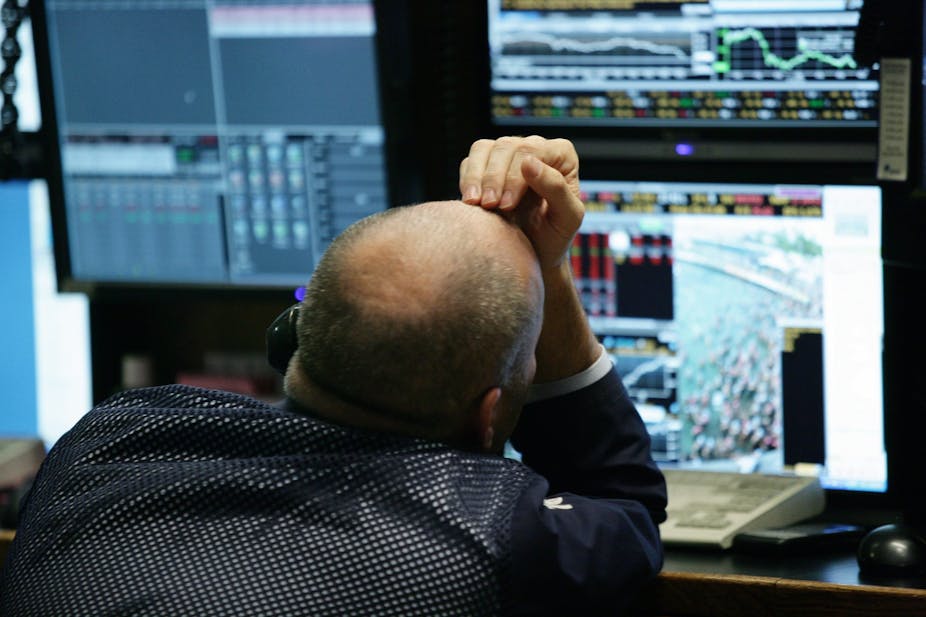Only a few hours after announcing he had purchased nearly US$2.5 billion of Apple shares, investor Carl Icahn was demanding the company buy back US$150 billion of its own shares.
Now the company has done just that.
Earlier last year, other institutional shareholders pressured the company into announcing a US$100 billion share repurchase and dividend program.
Many companies are retaining abnormally large amounts of cash on their balance sheets. For instance, cash accounted for 7.1% of US company assets at June 2013, according to the Fed, the highest level since 1963. This is attracting the pressure to distribute the cash to shareholders. But how beneficial are share buybacks for shareholders?
On balance, buybacks are probably a good thing for investors. But it’s by no means one-sided.
A buyback is a transaction reducing the amount of equity a company has on issue, funded either by decreasing net cash or increasing net debt. It trades one form of “funding” for another, incurring some transaction costs along the way. This big picture view provides an immediate tip-off that buybacks should not be expected to create huge amounts of value, unless there is a large advantage from changing the funding mix.
Buybacks and the balance sheet
Shifting the funding mix through a buyback can have a variety of effects, some of which can be offsetting or even contradictory:
Earnings Per Share (EPS) effects: A key argument made for buybacks is that they increase EPS. While this is true in most cases, the magnitude and even direction of the effect depends on the relation between the yield on equity versus cash or debt. Buybacks increase EPS if the earnings yield (EPS/price) exceeds the after tax interest cost, as each dollar spent buys more earnings than the cost of the funding the buyback.
With interest rates near historical lows, buybacks can substantially boost EPS. However, this does not hold as a general rule. Buybacks can decrease EPS in situations where a company trades on a very low earnings yield, or interest rates are high.
Price/Earnings ratio (P/E) effects: It is sometimes assumed that higher EPS will result in commensurately higher share prices. Not so quick.
In theory at least, buybacks should also be accompanied by a lower P/E, meaning the EPS increase should not fully translate into a higher share price. The reason is that retiring equity through cash or debt funding also increases leverage. Higher leverage means higher risk, which means higher cost of equity, which means lower P/Es. But what is the balance between the EPS and P/E effects?
Capital structure and weighted average cost of capital (WACC): As mentioned, a buyback alters the capital structure of a company. If the company is “under-geared” – as many currently seem to be – increasing leverage towards more optimal levels may reduce WACC and create net value which then accrues to shareholders. Again, the magnitude and direction depends on the situation. An over-geared company facing bankruptcy could push itself to the brink by performing a buyback.
Relative pricing and “cost” of equity versus debt: The points made so far sit within the realms of perfectly efficient markets. What if either equity or debt were “mis-priced”, so that debt was a “cheaper” source of (risk-adjusted) funding?
In this case, value might be created by swapping equity for debt via a buyback. Care is always needed in mounting arguments based on prices being “wrong”. However, with central banks rather than markets determining interest rates at the present time, one does wonder…
Price pressure: Another argument is that buying by the company may itself push up the share price. Effectively this argument also relies on imperfect markets. The case is not a strong one for two reasons.
First, any such share price increase is likely to be transitory, with fundamentals reasserting themselves once buying pressure subsides.
Second, buybacks don’t tend to be implemented in this manner. The propensity is for companies to opportunistically buy back shares in weakness, soaking up selling pressure and supporting rather than propelling the price higher. It is quite common for buyback programs not to be completed.
Signalling: Another consideration is whether announcing a buyback might be signalling some value-relevant information. Here there are two contradictory interpretations.
On the positive side is the signal from the company of willingness to work the balance sheet, and focus on shareholder value. A buyback provides comfort that excess cash is not just being retained for empire building, to be possibly squandered on bad investments.
On the negative side, buybacks may be taken as a signal of a lack of attractive growth opportunities.
Balancing the above effects, buybacks are more likely to be positive than negative for shareholders. This seems especially so at the present time, when many companies are under-geared and the pricing of equities and fixed income appears out of kilter. Nevertheless, care should be taken not to overstate the benefits. Nor should it be presumed that buybacks are always a good thing.

